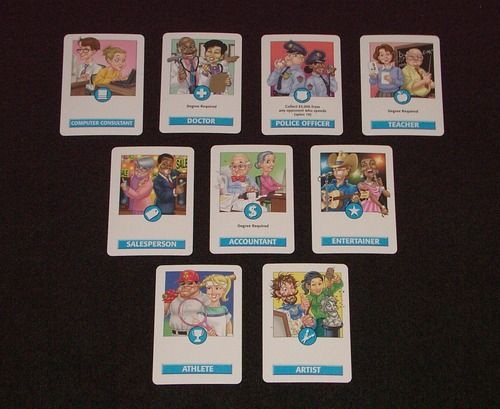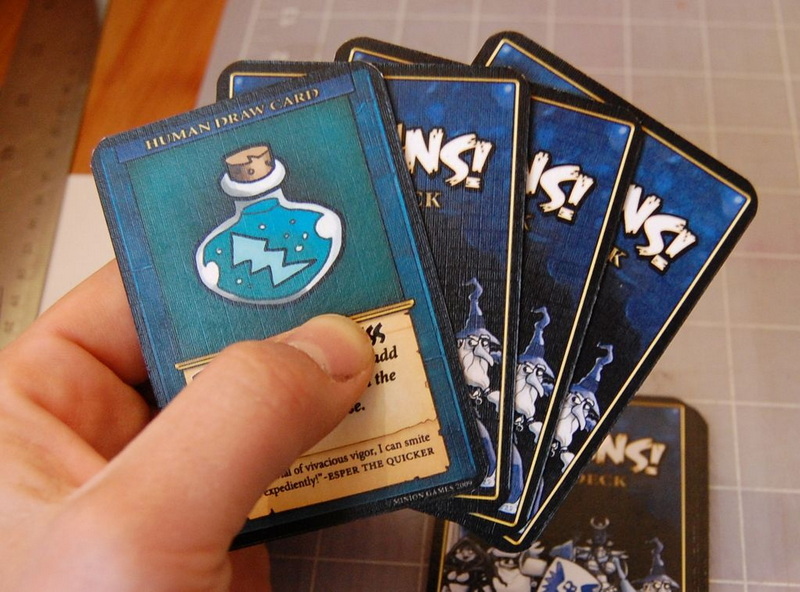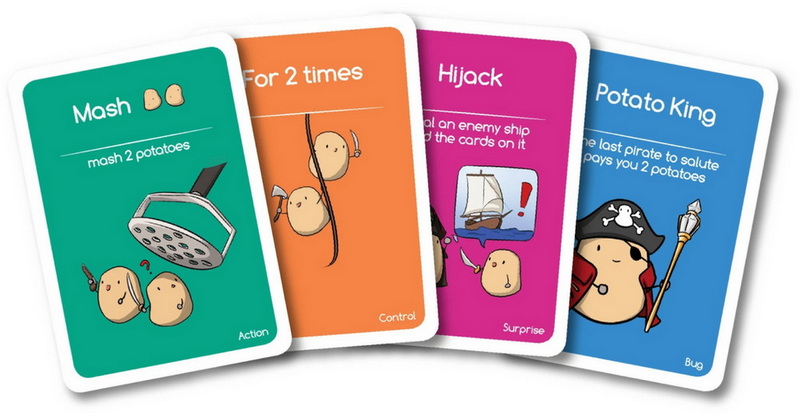Content Menu
● Conceptualization
>> Brainstorming Ideas
>> Research Existing Games
● Designing the Rules
>> Writing the Rules
>> Creating a Rule Summary
● Developing the Cards
>> Artwork and Illustrations
>> Card Layout
● Prototyping
>> Conducting Playtests
>> Iterative Testing
● Iteration and Refinement
>> Balancing the Game
>> Final Playtesting
● Finalizing the Game
>> Preparing for Production
>> Packaging and Presentation
● Publishing Your Game
>> Marketing Your Game
>> Building a Community
● Conclusion
● Related Questions
>> 1. What are the essential components of a card game?
>> 2. How do I balance a card game?
>> 3. What tools can I use to design my card game?
>> 4. How can I market my card game?
>> 5. What are common mistakes to avoid when creating a card game?
Creating a card game can be an exciting and rewarding endeavor. Whether you are a seasoned game designer or a beginner, the process involves several key steps that will help you bring your vision to life. This comprehensive guide will walk you through the entire process of producing a card game, from conceptualization to publication.

Conceptualization
The first step in producing a card game is to develop a solid concept. This involves brainstorming ideas and determining the theme of your game. Here are some tips to help you with this stage:
- Identify Your Audience: Consider who will be playing your game. Is it for children, adults, or a specific niche group? Understanding your audience will guide your design choices.
- Choose a Theme: The theme can be anything from fantasy, science fiction, historical, or even educational. A strong theme will help you create engaging gameplay and artwork.
- Define the Objective: What is the goal of the game? Is it to collect points, defeat opponents, or complete tasks? Clearly defining the objective will help shape the rules and mechanics of your game.
Brainstorming Ideas
Brainstorming is a crucial part of the conceptualization phase. Gather a group of friends or fellow designers and throw around ideas. Use techniques like mind mapping to visualize connections between different concepts. Consider what makes existing card games fun and how you can incorporate those elements into your own game.
Research Existing Games
Before finalizing your concept, research existing card games. Analyze their mechanics, themes, and player feedback. This will help you identify gaps in the market and inspire unique ideas for your game. Look for games that have similar themes or mechanics and think about how you can differentiate your game from them.
Designing the Rules
Once you have a concept, the next step is to design the rules of your game. This is crucial as it dictates how players will interact with the game. Here are some considerations:
- Game Mechanics: Decide on the core mechanics of your game. Will it be a strategy game, a luck-based game, or a combination of both? Consider how players will draw cards, play cards, and win the game.
- Card Types: Determine the types of cards you will include. Common types are action cards, character cards, and event cards. Each type should have a specific function within the game.
- Balance: Ensure that the game is balanced. No single card or strategy should dominate the game. Playtesting will help identify any imbalances.
Writing the Rules
When writing the rules, clarity is key. Use simple language and structure the rules logically. Start with an overview of the game, followed by setup instructions, gameplay mechanics, and endgame conditions. Include examples to illustrate complex rules. A well-written rulebook can significantly enhance the player experience.
Creating a Rule Summary
Consider creating a one-page summary of the rules that players can reference during gameplay. This can help new players quickly understand the game without having to read through the entire rulebook. Include key terms, card types, and a brief overview of the turn structure.
Developing the Cards
With the rules in place, you can start developing the actual cards. This involves both design and content creation:
- Card Design: Create visually appealing cards that reflect the theme of your game. Use colors, illustrations, and typography that enhance the gameplay experience. Tools like Adobe Illustrator or online platforms can help you design your cards.
- Card Text: Write clear and concise text for each card. This includes descriptions, effects, and any necessary rules. Make sure the text is easy to read and understand.
Artwork and Illustrations
The artwork on your cards is crucial for attracting players. If you are not an artist, consider hiring a professional illustrator or collaborating with someone who has artistic skills. Ensure that the artwork aligns with the theme and tone of your game. High-quality illustrations can elevate the overall appeal of your game.
Card Layout
Design a consistent layout for your cards. This includes the placement of the title, artwork, text, and any icons or symbols. A well-organized card layout makes it easier for players to understand the card's function at a glance. Consider using templates to maintain consistency across all cards.

Prototyping
Before finalizing your game, it's essential to create a prototype. This allows you to test the game mechanics and rules in a real-world setting:
- Create a Prototype: Use simple materials like cardstock or paper to create a rough version of your game. This doesn't need to be perfect; it's just for testing purposes.
- Playtesting: Gather a group of players to test your game. Observe how they interact with the game and take notes on their feedback. This is a critical step in refining your game.
Conducting Playtests
When conducting playtests, aim for a diverse group of players. This can include friends, family, and even strangers. Different perspectives can provide valuable insights into how your game is perceived. Encourage honest feedback and be open to criticism.
Iterative Testing
Playtesting should be an iterative process. After each session, analyze the feedback and make necessary adjustments. This may involve tweaking rules, redesigning cards, or even rethinking game mechanics. The goal is to create a smooth and enjoyable experience for players.
Iteration and Refinement
Based on the feedback from playtesting, you will likely need to make several adjustments to your game:
- Adjust Rules: Modify any rules that players found confusing or unbalanced. This may involve changing how cards interact or adjusting the win conditions.
- Redesign Cards: If certain cards are not working as intended, consider redesigning them. This could mean changing their effects, artwork, or even their type.
Balancing the Game
Balancing your game is crucial for ensuring a fair and enjoyable experience. Pay attention to player feedback regarding card strength and game flow. You may need to adjust the power level of certain cards or introduce new mechanics to create a more balanced environment.
Final Playtesting
Once you have made adjustments, conduct a final round of playtesting. This is your opportunity to see how the changes have impacted the game. If possible, test the game with players who have not played it before to get fresh perspectives.
Finalizing the Game
Once you are satisfied with the gameplay and design, it's time to finalize your game:
- Professional Design: If you are serious about publishing your game, consider hiring a professional graphic designer to create high-quality artwork and layouts for your cards.
- Production: Research printing options for your cards. There are many companies that specialize in card game production, and they can help you with everything from printing to packaging.
Preparing for Production
Before sending your game to print, ensure that all files are correctly formatted and that you have accounted for any production requirements. This may include bleed areas, color profiles, and file types. Double-check everything to avoid costly mistakes.
Packaging and Presentation
Consider how you want to package your game. A well-designed box can enhance the overall presentation and protect the cards. Think about including a rulebook, player aids, or other components that can improve the player experience.
Publishing Your Game
The final step is to publish your game. This can be done in several ways:
- Self-Publishing: If you want full control over your game, consider self-publishing. This involves managing production, marketing, and distribution yourself.
- Crowdfunding: Platforms like Kickstarter can help you raise funds for your game. Create a compelling campaign that showcases your game and its unique features.
- Finding a Publisher: If you prefer to work with an established company, research publishers that specialize in card games. Submit your game for consideration and be prepared for feedback.
Marketing Your Game
Regardless of your publishing route, marketing is essential. Build a presence on social media, create a website, and engage with potential players. Consider attending gaming conventions to showcase your game and connect with the gaming community.
Building a Community
Building a community around your game can help generate interest and support. Engage with players through forums, social media, and events. Encourage feedback and foster a sense of belonging among your players.
Conclusion
Producing a card game is a multifaceted process that requires creativity, planning, and perseverance. By following the steps outlined in this guide, you can turn your idea into a tangible product that players will enjoy. Remember to stay open to feedback and be willing to iterate on your design. With dedication and passion, your card game can find its place in the gaming community.

Related Questions
1. What are the essential components of a card game?
The essential components of a card game typically include a deck of cards, rules for gameplay, and a way to keep score or track progress.
2. How do I balance a card game?
Balancing a card game involves playtesting and adjusting the rules and card effects to ensure no single strategy or card is overwhelmingly powerful.
3. What tools can I use to design my card game?
You can use graphic design software like Adobe Illustrator, online card design tools, or even simple drawing applications to create your card designs.
4. How can I market my card game?
You can market your card game through social media, gaming conventions, crowdfunding platforms, and by building a community around your game.
5. What are common mistakes to avoid when creating a card game?
Common mistakes include not playtesting enough, having overly complex rules, and failing to define a clear objective for the game.
































